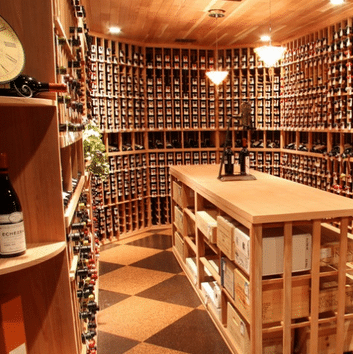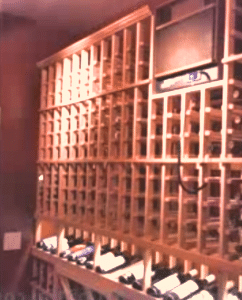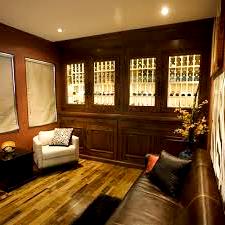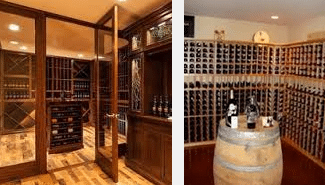Typically, people just stack bottles of wine on a counter top or have them cooled in the chiller; but, in actuality, wine requires the correct storage settings, and a common kitchen cupboard or refrigerator is not enough.
During wine cellar construction, you should focus on functionality, while making up your mind on the many things to be considered during brainstorming wine cellar design ideas.
How often do you want to stay in your wine cellar?
How do you want the space to look?
Do you intend to receive guests in your wine room?
These and a lot more questions are significant to your wine cellar design. One option to properly house your wine collection is in your basement, which is just perfect for a wine cellar renovation. Here are some tips on how you can convert and have your very own custom wine cellar.
Control the Setting
Invest in a wine room with a wine cellar cooling system. This system type keeps a constant and perfect balance between the humidity and the temperature, which other conventional systems do not do.
If you want your wine to maintain its full flavor through time, you should invest in methods for your wine cellar temperature control.
Temperature is inarguably among the most important factors to consider when thinking of wine cellar design ideas, because it can greatly affect the quality of wines.
If the temperature gets too warm, wine will age at a faster rate, which will adversely affect its flavour and taste.
Also, a temperature that’s too warm increases the pressure inside the wine bottle, which will cause the wine to lose its gleam.
Add Proper Insulation
Aside from wine cellar refrigeration systems, you can also maintain the wine cellar temperature through insulation. However, you need to consult a professional to assess your geographic position and what type of insulation is needed for your custom wine cellar in your location.
Maximize the Space
You don’t need to convert the whole room into a custom wine cellar. If you’re short on space, consider renovating a designated area. If you have signed a contract with a company for the wine cellar construction, add in your own wine cellar design ideas from the beginning of the project, so the professionals will know what you want, what you need, and what fits in your budget.
Also, don’t forget to furnish them the dimensions of the room or just a part of the room to renovate into a wine cellar. This should include the width, the height, the floor area and the doors.
Decide on the Overall Look
Include in the design for your renovation the wine cellar accessories to use. If you want a contemporary aesthetic, opt for stainless wine cellar supplies. On the other hand, a natural finish is also a good idea. For this, pick wine cellar accessories made of wood, such as walnut, cypress or mahogany.
Don’t Forget the Lighting
For cost-effective lighting, pick bulbs with standard line-voltage tracks. They’re also dimmable with the use of a standard dimmer, and the light quality is close to that of a halogen lamp.
Invest in Wine Cellar Accessories
Aside from racks, you will also need wine cellar supplies and equipment that will organize and regulate your wine room.
For humidity regulation, install a humistat during wine cellar construction. This de-humidifier will regulate your wine cellar’s relative humidity. Conversely, you also need a hydrometer paired with it to read and measure the relative humidity, to make it easier for you to control and set the standard humidity for your collection.
To regulate light, you will need an overhead lighting fixture, so you can see when you are in your custom wine cellar. Opt for a softer light, like incandescent, rather than using fluorescent, to minimize the disturbance to your wine collection.
To control the temperature, install an AC or heating unit and a thermostat during the wine cellar renovation, especially if you are located in an area with volatile climate.
To avoid any odor from penetrating the corks and ruining your wines, make sure that during wine cellar renovation the area will be well-ventilated. Regulating the temperature will keep the air moving, while a fully ventilated storage area with vents and fans will regulate airflow into a wine cellar.
Other wine cellar accessories that you may need are a decanter or aerator for your red wines and a wine air removal pump or stopper for corking of unfinished bottles so they do not stale. If your collection increases, or if you plan on increasing it, consider having a foil cutter, a wine tote for travel, a drip ring to avoid spoilage when pouring, and a wine cooler sleeve or bucket, maybe made of marble or stainless steel, for the table.





